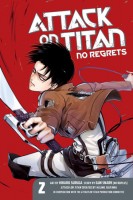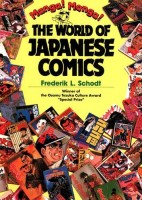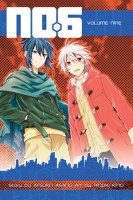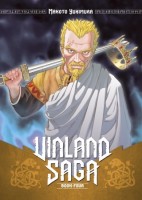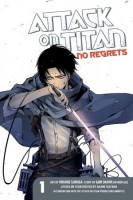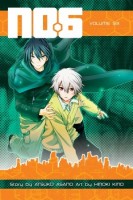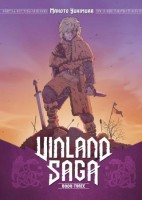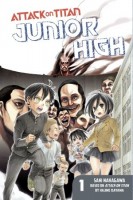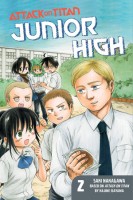 Creator: Saki Nakagawa
Creator: Saki Nakagawa
U.S. publisher: Kodansha
ISBN: 9781612629186
Released: November 2014
Original release: 2013-2014
I was actually a little surprised by how much I ended up liking the first omnibus of Attack on Titan: Junior High. Created by Saki Nakagawa with input from Hajime Isayama (both of whom actually attended the same design school, though that fact is more of a coincidence than anything else), Attack on Titan: Junior High is specifically a parody spinoff of Isayama’s immensely popular manga series Attack on Titan. More generally, the series is also a parody of just about any manga with a school setting. Attack on Titan: Junior High is an odd mix of Attack on Titan and contemporary school life that actually manages to work much of the time. The second Attack on Titan: Junior High omnibus, released by Kodansha Comics in 2014, collects the third and fourth volumes of the series’ original Japanese edition, published in 2013 and 2014 respectively. Kodansha was kind enough to send me a review copy of Attack on Titan: Junior high, Omnibus 2 which, because I enjoyed the first omnibus, I was particularly happy to see.
Life isn’t easy for the human students of Attack Junior High. Not only do they have to worry about the normal sorts of challenges encountered at school–getting a passing grade in class, surviving the ire of upperclassmen, daring to ask another student on a date, ensuring their clubs aren’t suspended, and so on–they also have to worry about the rest of the student body, the Titans. It doesn’t help that Attack Junior High’s principal just so happens to be a Titan as well, meaning most of the administration looks the other way as the Titans terrorize the much smaller students, the victims of bullying and stolen lunches. But then there’s the beloved teacher Mr. Erwin Smith who on the surface seems to favor the Titans when in actuality he harbors a deep-seated hatred so intense that it rivals Eren’s. Considering Eren’s single-minded commitment to taking on and taking out all of the Titans, this is rather impressive.
There is no denying that Attack on Titan: Junior High is an utterly ridiculous manga series. In general, I think that overall I probably enjoyed the first omnibus slightly more. The novelty of the spinoff has worn off some, but the second omnibus still managed to make me laugh on multiple occasions. I do find that the series works best for me when it is directly riffing on the original Attack on Titan manga and its fandom rather than playing around with more generic story tropes. Granted, from time to time those parodies can be entertaining, as well. But ultimately Attack on Titan: Junior High tends to be rather uneven with its humor. Sometimes the manga can be absolutely hilarious, but just as often the attempts at comedy just aren’t very funny. Unsurprisingly, many of the jokes in the series require readers to already be very familiar with Attack on Titan to really appreciate them, but it’s those readers for whom the series is intended to begin with.
Attack on Titan: Junior High and its style of humor certainly will not appeal to everyone. It’s not particularly clever and much of the manga can only be enjoyed by readers who are already predisposed towards random, absurd, and frequently nonsensical comedy. The English translation and localization of Attack on Titan: Junior High is fairly loose in sections, adding a few jokes here and there and freely changing pop culture references to ones that will likely be more recognizable to Western audiences. I’m not sure how funny or effective some of the changes will be in a few years’ time since they often refer to recent events, but for now they are amusing. The best gags are those where Nakagawa takes the characters of Attack on Titan and emphasizes and distorts their personality quirks to extremes. One of the most appealing things about the original Attack on Titan is its ensemble cast, and that is true of Attack on Titan: Junior High as well. Fortunately, that’s something that doesn’t rely on timeliness.
Thank you to Kodansha for providing a copy of Attack on Titan: Junior High, Omnibus 1 for review.
